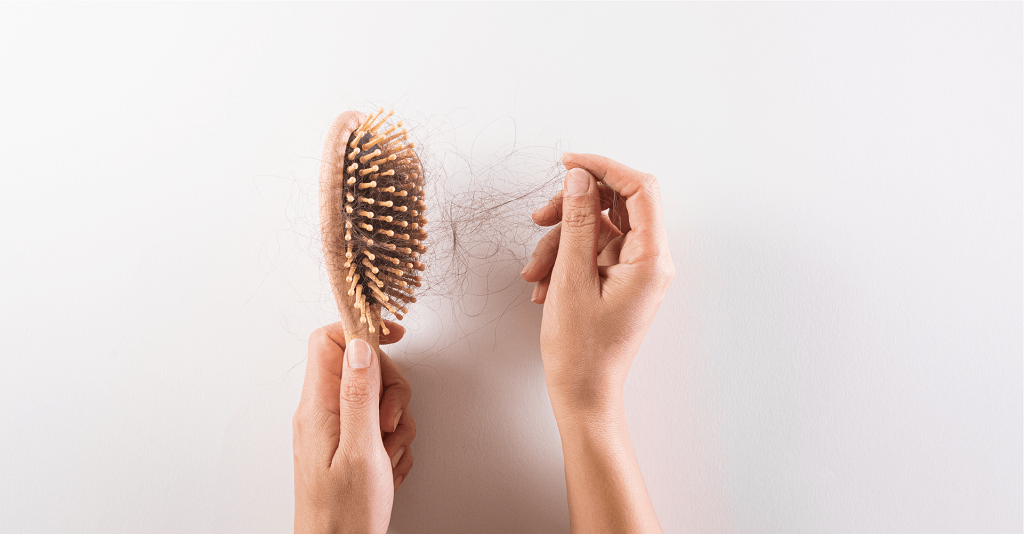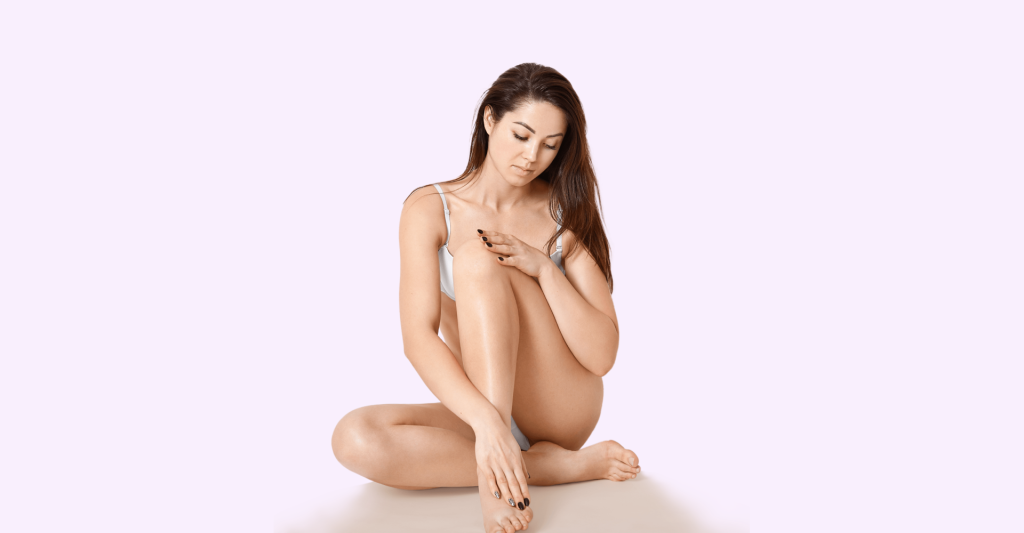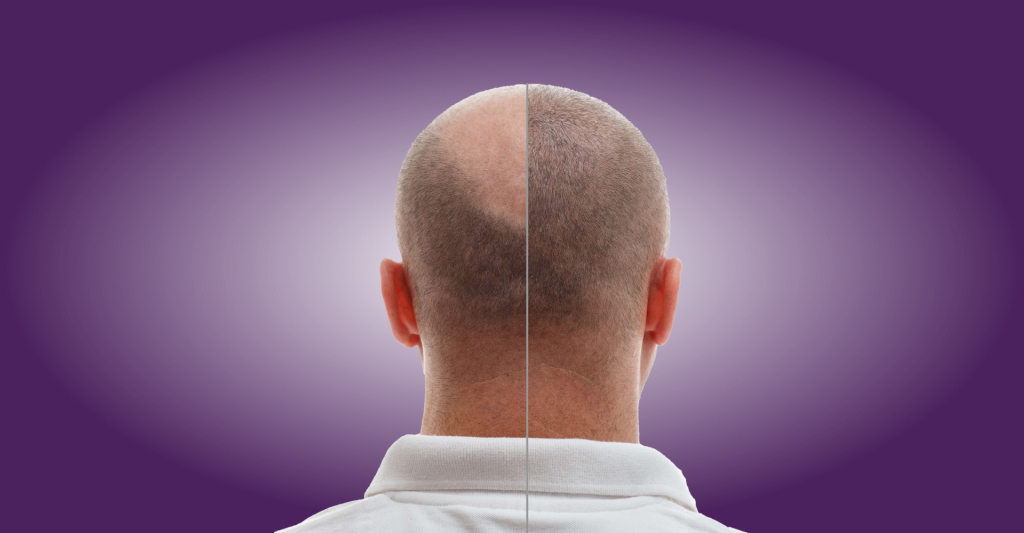A full head of thick, lush hair is associated with youthfulness and attractiveness. According to the American Academy of Dermatology, a person loses, on average, about 50-100 strands of hair per day. But in some people, these are not restored with new growth. One of the factors responsible for hair loss can be heredity.
Hereditary hair loss is a natural condition caused by a combination of genetics and hormone levels and often leads to baldness. This condition is known as androgenic alopecia and male pattern baldness in men & female pattern baldness in women.
Hair loss in both men and women typically begins in their twenties and thirties; 50% of the hair may be lost before it is even evident. Hereditary hair loss starts with thinning hair and frequently proceeds to complete hair loss on some areas of the scalp.
Excessive hair strands on the comb or the pillow are signs of a hair loss problem. Hair loss in men typically begins at the crown and temples and progresses in an M-shaped pattern. Only the hair at the rear of the head and the rim of the hair remain in the most advanced stage. Bald spots in women with genetic hair loss are uncommon.
Genetic hair loss symptoms:
While hair loss is frequent, and it is usual to lose 50 to 100 strands of hair daily. Losing hair strands may be more evident in persons with longer hair. If not treated, hair loss might progress to a more serious condition.
Hereditary hair loss is a kind of hair loss caused by genetic factors. This type of hair loss, also known as pattern baldness, occurs frequently with age and is inherited by blood. Hereditary hair loss, often known as female or male pattern baldness, is the most prevalent cause of hair loss.
- Genetic Hair Loss Causes
- How to Prevent Hair Loss Caused by Genetic Factors
Genetic hair loss in females:
Female pattern baldness is the most common type of genetic hair loss in women. Each strand of hair is held in an area by a tiny hole in the skin known as a follicle. Baldness develops when the hair follicle shrinks over time, resulting in shorter, finer hair. The follicle eventually stops producing new hair. The follicles are still active, indicating that new hair can be grown. The cause of female pattern baldness is unknown, but it may be connected to:
- Aging
- Changes in androgen levels
- Male or female pattern baldness runs in families.
- Heavy blood loss during menstruation
- Certain medications, for example, estrogenic oral contraceptives
Symptoms of hair loss in females:
Symptoms Hair thinning is not the same as male pattern baldness. In the case of female pattern baldness:
- The top and crown of the scalp’s hair thin the most. It typically begins with a widening of the center hair part.
- Except for regular recession, which everyone experiences as they age, the front hairline stays untouched.
- As in men, hair loss rarely develops to total or near total baldness.
- Hair on the head is thinner when the cause is higher androgens, whereas hair on the face is coarser.
Genetic hair loss male:
- Alopecia areata : It is a kind of alopecia. Alopecia areata is an immunological disorder that results in patchy hair loss.
- Trichotillomania: Trichotillomania, commonly known as a hair-pulling disorder, is a psychiatric disease characterized by the desire to pull out one’s own hair.
- Some hairstyles: Hairstyles that strain your hair, such as tight ponytails, can cause traction alopecia, a kind of hair loss. Hair loss of this sort might be permanent or transient.
- Radiation treatment:Hair loss is a typical side effect of radiation therapy commonly employed in cancer treatment. This hair loss is frequently transient.
- Stress: Prolonged physical or emotional stress might cause temporary hair thinning.
- Nutrition deficiencies: Inadequate protein or other necessary minerals, such as zinc, might have a negative impact on hair development.
Genetic hair loss treatment:
Hair loss caused by genetic reasons is irreversible, and you can do little to prevent it. However, there are various ways to slow it down.
- Healthy living habits: Eating a well-balanced diet, getting enough sleep, reducing stress, and exercising frequently can all help to improve your general health and hair health.
- Medication used topically: Topical drugs like minoxidil are frequently used as the first line of treatment. These lotions are typically used directly to the scalp in balding areas.
- Medications are taken orally: To treat MPB, your doctor may prescribe oral drugs.
- Hair transplant surgery: Hair transplantation surgeries that relocate hair follicles from one side of your scalp to balding areas are known as follicular unit transplantation and follicular unit extraction. At Sasha, we provide the best hair transplant treatment in Hyderabad.Dr Sanjay at Sasha Luxe Clinic is renowned for his expertise in hair transplantation and has completed 100+ hair transplants.
- Platelet-rich plasma treatment: Platelet-rich plasma injections may aid in stimulating hair growth in regions of hair loss. More research, like laser therapy, is required to understand its effectiveness.
Get the best hair loss treatment today:
Remember that you are not alone if you have pattern baldness. Androgenic alopecia affects both men and women. Hair loss in men might worsen with age. But there is a way out.
Allow us to examine your scalp and hair. Then, start a journey to achieve shiny, healthy hair with Sasha Luxe Dermatology & Cosmetic Surgery Center.













